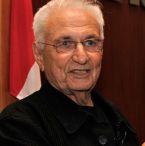Brutalism’s Enduring Impact on Morocco’s Post-independence Architectural Landscape
The fact that Morocco underwent a marked revolution in its architectural Imagen after independence in 1956 is indisputable. Architects who had become free from importing goods from former colonial powers could take the initiative to pave the way for an independent, self-construction, and self-managed Morocco. The Bruce legacy, the bold forms, and the raw material played a huge role in defining the post-independence architectural landscapes in cities such as Agadir, Casablanca, Tangier, and Marrakech. The legacy did not only determine the towns but also had a long-lasting effect on post-independent architecture.
Transformative Events Shaping Urban Landscapes
The earthquakes or revolts of Morocco's history, either natural or political, have impacted the kingdom and transformed its urban landscape. Agadir, the city that suffered a tragic earthquake in 1960, was an example of the strength and revival of a society when the riskiest exposure to nature came. King Mohamed V, who led the reconstruction processes, attracted many local and foreign architects worldwide, including the famous Le Corbusier, who was commissioned to revive the city planning and the urban structure. The hybrid creation, therefore, was a blend of modernist patterns and vernacular styles, represented by structures such as the Hotel de Ville, which had diverse features that included brutalist forms and traditional Moroccan patterns.
Thus, Casablanca came to signify modernity after the war, with its skyline dotted by temples built by brutality. The architectural legacy of the Church of Notre-Dame de Lourdes is well-preserved, a fact the curved concrete form and the bright stained-glass windows provide us with a special example of the old and the new combined. Finally, the postal building of the damages, as well as projects done by Jean-François Zevaco, can also be considered as the expression that the city adopts such aesthetics to make sense of its place on the world stage.
Fusion of Brutalism and Tradition in Marrakech
In Marrakech, the fusion of brutalism with traditional Moroccan architecture resulted in structures like the Province de Marrakech and the Rehabilitation Center in Tetmellil, which sought to redefine the boundaries of regionalism in the post-colonial era. Meanwhile, the Sidi Harazem thermal bath complex near Fez exemplifies the integration of brutalist forms with public spaces, creating cohesive environments that cater to the needs of city dwellers.
The past of the brutalism style in Morocco doesn't just belong with architectural drawings; it symbolizes a colossal mental shift in the national decorum - a turn away from the colonial era and a pivot towards a future redefined by self-determination and inventiveness. Embracing brutalist principles, architects, to some extent, were able to capture the essence of Morocco's urban environment. They were able to use the monumentality of the style to create an identity and a meaning that still dots and inspires the cities of Morocco.
Challenges and Preservation Efforts
But, beyond the troubles that brutalism has brought into Morocco, there are also some difficulties with it. However, as the country has become more modern and urbanized, those iconic structures have been objects of destruction and dereliction in the eyes of builders and others. Generally, saving brutalist architecture would entail a severe effort involving acknowledging the importance of its historical dimension and its adaptation to today's culture and society. Initiatives dedicated to adaptive reuse and heritage conservation may be instrumental in the significance of these remarkable landmarks, making a real contribution to Moroccan cultural heritage for a long.
To summarize, from brutalism, a strong mark is left on Morocco's post-independence architectural legacy form, and its cities outline the identity of communities. From reconstructions of Agadir to modernism experiments in Marrakech and Casablanca, brutalism means more than just the right style. It expresses the relentless aspiration, the innovations, and the sovereignty that define the path of Morocco's further development. However, the glorification of brutalist design had to endure over the years since the architecture of that period became part of Morocco's heritage.
Related Article : Controversial Love-Hate Affair With Brutalist Architecture














